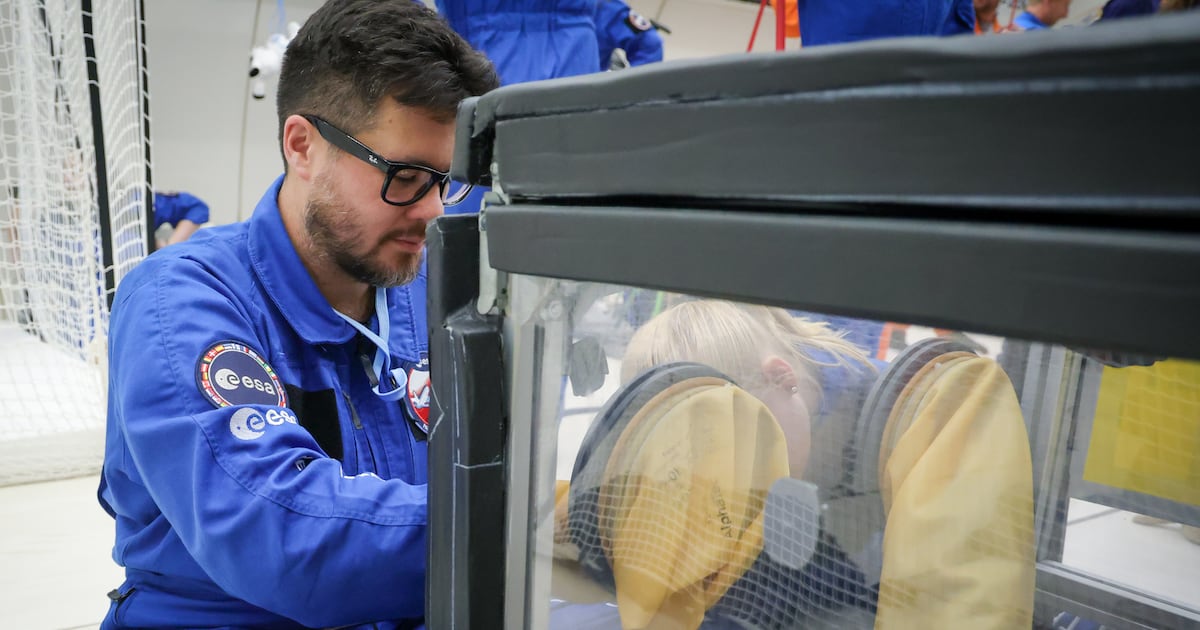Science
B.C. Anesthesiologist Explores Anesthetic Behavior in Space

A research project led by Dr. Matthew Turnock, an anesthesiologist based in British Columbia, has delved into the effects of anesthetic drugs in microgravity environments. The team’s groundbreaking work aims to understand how these medications behave in space, a critical consideration for future space missions.
Research Conducted in Microgravity
As part of their study, Dr. Turnock and his colleagues experienced microgravity firsthand aboard an Airbus A310 in France. “It was a blast, for sure. Very intense, but a lot of fun,” Dr. Turnock remarked. He is affiliated with both Eagle Ridge Hospital and Royal Columbian Hospital, where he regularly practices anesthesiology. The unique environment allowed the researchers to simulate conditions similar to those faced by astronauts.
Dr. Turnock explained the challenges of administering anesthetics in space: “In space, giving an anesthetic is challenging because of the space and volume requirements. Many anesthetics are inhaled, so if there’s an accidental circuit disconnection, the entire crew of a spacecraft could be anesthetized, which would be a serious concern.”
Findings and Future Directions
The research utilized CT images to create a model of a spinal canal, which they filled with simulated spinal fluid. Dr. Turnock highlighted a potential risk: “There’s a chance the medication could float up to the brain. Sometimes we see that here on Earth; we call it a high spinal.” This prompted the team to investigate how gravity affects the spread of anesthetics.
During their experiments, the team experienced brief moments of weightlessness, approximately 25 seconds each time the aircraft reached its peak altitude. “And it’s not simulated; it’s real zero gravity, exactly how an astronaut would feel in space,” Dr. Turnock noted.
Contrary to their initial hypothesis that the absence of gravity would lead to a greater risk of medication spreading uncontrollably, the researchers found that the anesthetic did not spread adequately in microgravity. “The medication doesn’t spread enough for it to work, but there are things we can investigate to perhaps promote the spread of medication,” he explained.
This unexpected outcome has opened new avenues for research and has raised further questions regarding anesthetic practices in space. Dr. Turnock’s team, which includes Dr. Alex Suen, Dr. Siobhan Wagner, and Adrian Tabari, is motivated to continue exploring these challenges with support from the Canadian Space Agency.
This research is not only significant for its immediate findings but also for its implications on the future of medical practices in space. As humanity looks toward long-duration missions, understanding the intricacies of anesthetics in microgravity environments will be crucial for ensuring the safety and well-being of astronauts.
-

 Politics2 weeks ago
Politics2 weeks agoSecwepemc First Nation Seeks Aboriginal Title Over Kamloops Area
-

 World4 months ago
World4 months agoScientists Unearth Ancient Antarctic Ice to Unlock Climate Secrets
-

 Entertainment4 months ago
Entertainment4 months agoTrump and McCormick to Announce $70 Billion Energy Investments
-

 Lifestyle4 months ago
Lifestyle4 months agoTransLink Launches Food Truck Program to Boost Revenue in Vancouver
-

 Science4 months ago
Science4 months agoFour Astronauts Return to Earth After International Space Station Mission
-

 Technology3 months ago
Technology3 months agoApple Notes Enhances Functionality with Markdown Support in macOS 26
-

 Top Stories1 month ago
Top Stories1 month agoUrgent Update: Fatal Crash on Highway 99 Claims Life of Pitt Meadows Man
-

 Sports4 months ago
Sports4 months agoSearch Underway for Missing Hunter Amid Hokkaido Bear Emergency
-

 Politics4 months ago
Politics4 months agoUkrainian Tennis Star Elina Svitolina Faces Death Threats Online
-

 Politics4 months ago
Politics4 months agoCarney Engages First Nations Leaders at Development Law Summit
-

 Lifestyle2 months ago
Lifestyle2 months agoManitoba’s Burger Champion Shines Again Amid Dining Innovations
-

 Technology4 months ago
Technology4 months agoFrosthaven Launches Early Access on July 31, 2025



















